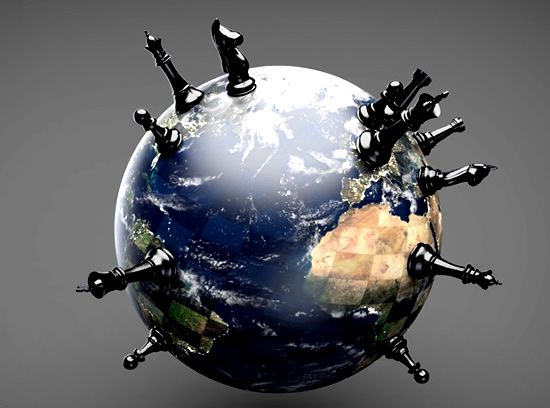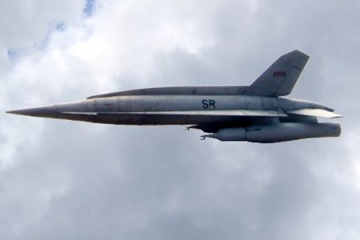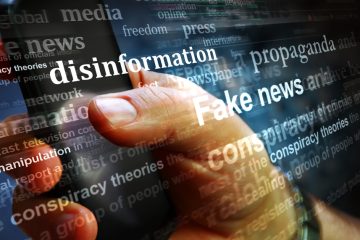
The Interplay between Outer Space Security and Terrestrial Global Security
US president Donald Trump recently announced the establishing of a “Space Force,” a new branch of the military to project US military might into outer space. In doing so, he followed up on his March 2018 statement that his administration “recognizes that space is a war-fighting domain, just like the land, air and sea.” While such ideas are neither wholly new nor exclusively held by president Trump, they seem to challenge the fundamental principle of outer space as a global commons, which was enshrined in the 1967 Outer Space Treaty. Questions of outer space security are not just important for their own sake, as this article will show, they have wide-reaching implications for global security. Global security and space security …

Just Power for a Reformed UN
The UN secretary-general began his mandate in January 2017, renewing hope about the organization’s reform. Repeated failings of the UN Security Council during various conflicts like the Palestinian issue or the Syrian conflict are sharp reminders that the United Nations simply is not delivering on its aims of global peace. Reforms must consider justice and dignity, both of which have strategic relevance for powerbrokers with the all-encompassing connectivity of the contemporary world alongside heightened attention to values, reputation and credibility in terms of legitimacy and regard for human rights. The merits of the UN in global governance should not be understated. A wide range of contemporary challenges – from climate change to terrorism – cannot be adequately addressed unilaterally or …

US Space Policy and Strategic Culture
The United States has a consistent Strategic Culture, centered on a sense of exceptionalism, values-driven foreign policy, casualty aversion, as well as strong leadership. These features reflect in its space policy and ambitions, where the US has cooperated with other nations but assumes a position of natural leader. It remains to be seen how this role will evolve – although the sense of exceptionalism may endure – as new actors, including private companies, make their way into space. Why Strategic Culture Matters Developed in the 1970s, “Strategic Culture” is a concept used to analyze the role of culture and national idiosyncrasies in shaping national security decisions. As with many paradigms developed during the Cold War, it emerged in the context of …

The ‘Ocean Model of Civilization’, Sustainable History Theory, and Global Cultural Understanding
Many interpretations of international conflict share common assumptions regarding the default oppositional nature of states or cultures. According to Realism, the predominant theory of International Relations, conflict arises inevitably, and is a natural outcome of a highly competitive international environment. It is also a reflection, and extension, of the competitive, selfish and power driven nature of man. In a larger sense, “man” can refer both to individuals and to larger communities (or tribes, in ancient times) that one belongs to and toward which one feels protective – by virtue of sharing an in-group identity. For some thinkers, including some Realists, the origin of this perpetual conflictual mode can be traced to irreconcilable cultural differences. Samuel Huntington’s well-known “clash of civilizations” …

Us versus Them. How neurophilosophy explains our divided politics
Neuroscience has emerged as a new form of philosophy in recent years, with implications far beyond healthcare. At a time of divisive and turbulent politics, the study of the way the brain functions has opened the way for a new understanding of ourselves and our societies. The tools of neuroscience, and especially functional magnetic resonance imaging (fMRI), have provided unprecedented insights into the real-time workings of the human brain. Topics and debates previously reserved to philosophy can now be mapped in neurochemical and neuroanatomical terms. We are now beginning to understand some facets of human emotionality, decision-making, morality, trauma and the drive for political power down to the cellular level, by observing changes in neurochemistry, neural pathways, and neuro-anatomical transformations …

The neuro-philosophy of international relations
Neuroscience has had limited disciplinary connectivity to the field of International Relations (IR) and Politics. The field of IR is traditionally understood to be about the relations between states, competition, power and resources. As a result, the findings of neuroscience appear to hold little relevance for IR scholars. At the same time, the philosophical interest in human nature has been a crucial driver in the development of IR studies since its inception. At its origins, the Realist theory of International Relations comes from an analogy between human nature and states, and human nature and international anarchy. In his famous work Leviathan, first published in 1651, Thomas Hobbes elaborated on the state of nature and man’s fallible existence in the absence of …

Proposal of a dignity scale for sustainable governance
In October 2005, two North African teenagers died of electrocution in one of the banlieues of Paris as they were running from the police through a dangerous power substation. An inquiry later established the teens were innocent, and the incident sparked some of the worst unrest seen in France over the past 40 years. The riots brought about much debate over the tense relationship between immigrant youth and the state, the recurring problems of “fracture sociale,” and a perceived lack of social justice. Above all, the protests were an expression of acute feelings of alienation experienced by a large section of society. The banlieues have been a breeding ground for deep frustration, maintaining a distinctly poor and marginalized status for decades. Unemployment is common and …

Hypersonic missiles offer some impressive – and disturbing – capabilities
Between 2014 and June 2015, China conducted four major tests of its hypersonic missiles (with a fifth test in August). The fourth test of Wu-14, its ultra high-speed nuclear delivery vehicle, demonstrated a capacity for “extreme maneuvers.” It was assessed as travelling at a speed of Mach 10 (flying at 10 times the speed of sound or approximately 7,680 miles per hour). To understand this in comparative terms, a missile flying at subsonic speed can reach a maximum of 500-600 miles per hour. To qualify as “hypersonic,” a missile would have to move at least five times the speed of sound (Mach 5), as well as be able to evade counter-fire and strike with great precision. To date, no country has achieved …










